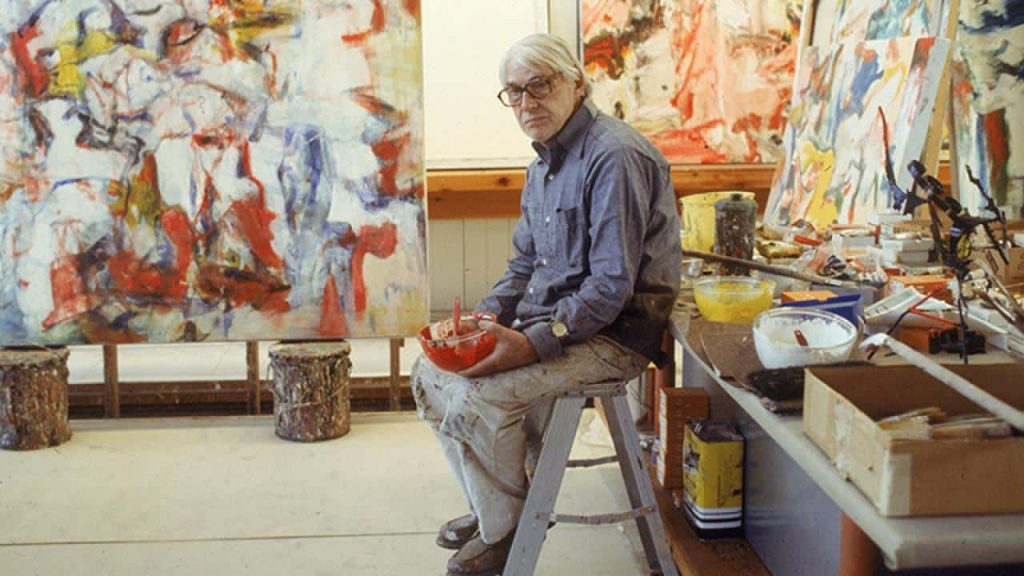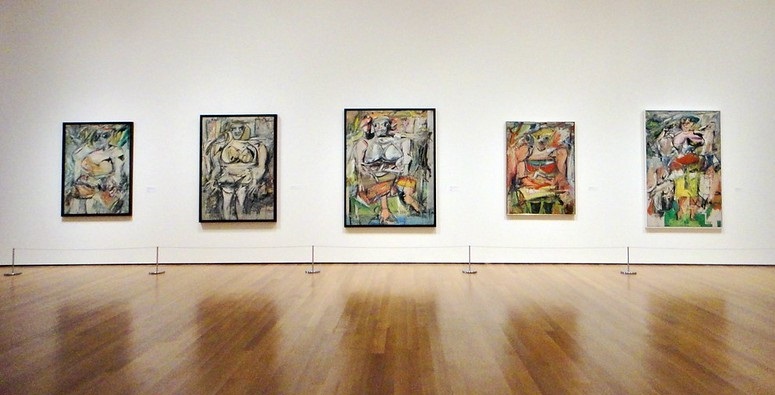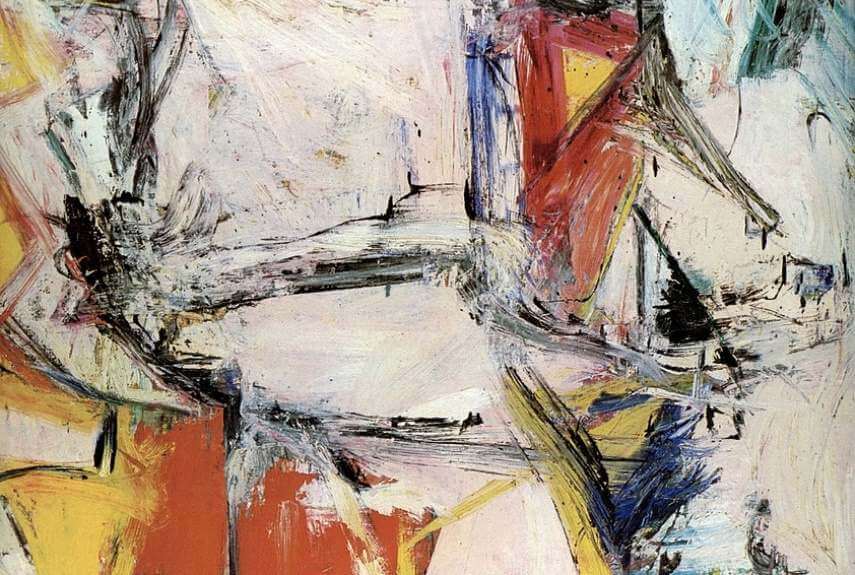William De Kooning is one of the most prolific painters whose paintings represent a diverse style of Art. Art lovers around the world highly appreciate Kooning’s most famous and expensive painting the “Interchange”. But what makes Interchange by William De Kooning excel on its own shell? And this article titled “Interchange by William De Kooning Critical Analysis” will explore the most important factors and history behind the painting along with explaining the styles and concepts.
De Kooning’s Interchange is one of the most expensive paintings in the world. And we are going to analyze this masterpiece from the Dutch-American painter. We will try to find out all the important information needed to understand the painting.
Among most spoken and admired paintings, a number of Kooning’s artworks have made their position. Even those paintings are on the list of most expensive paintings and Interchange is the most expensive of them all. In this article, we are also going to discuss the master artist from the mid-twentieth century, a man of many contradictions.
De Kooning the Man of Mystery and Contradictions
Throughout his artistic journey, his personal life created a lot of contradictions. Not just his characteristics but also his diverse body of works created contradictions as well.
Kooning was born in 1904 and he experienced atrocious events throughout his teenage. He witnessed two world wars and countless heart-breaking political events.
He lived the entire 20th century and died in 1997. As the entire century was full of happenings, Kooning’s life was like a thriller. De Kooning is a Dutch-American painter, but he spent the majority of his time as a Dutch citizen until he got American citizenship.
Several sources confirmed, Kooning was a very dashing and sensitive man having a rugged appearance. However, his brilliant and artistic sense made him one of the most celebrated intellectuals of the entire century. Besides, Kooning was a very open and honest person loved by his followers.

Despite the love from his followers, Kooning has also earned a lot of bashful comments from his heaters. His haters gave him the title of a cheater, scoundrel, and drunk. Kooning’s personal life was a complete thriller and we see the resemblance in his works. If we look at his work styles, there is no lack of diversity. Unlike him most of the other painters relied on their own styles.
Kooning’s diverse work style significantly indicates that many other artists influenced him directly. In his 70 years of artistic profession, he himself mentioned his style changed several times.
We all know that an artist’s life and work always move parallelly. In Kooning’s case, we can apply the same idea. Every artwork he created represents his bumpy life and events in the century.
Interchange by William De Kooning at Glance
Interchange is an oil on canvas that represents the life works of abstract expressionist painter William De Kooning. Kooning completed this impeccable artwork in 1955 and it measures 200.7 by 175.3 centimeters.
Kooning used quick gestural marks in Interchange. The picture features a woman sitting on a chair but the women just appear as a pick mass.
Like we said before, the painter himself noted significant changes in his own style when he made Interchange and this was not the first time. He experienced the change several times in his artistic life. Franz Kline Kooning’s most favorite artist had a significant influence on Interchange.
Shortly after its completion in 1955, De Kooning sold it at $4,000 to an architect named Edgar Kaufmann Jr. The buyer’s father, Edgar J. Kaufmann used to run a departmental store in Pittsburgh. Kauffman’s sold the painting among other art collections at Sotheby’s in New York in November 1989. The painting then went into Shigeki Kameyama’s possession. Kameyama was a Japanese art dealer and he also owns the Mountain Tortoise Gallery in Tokyo. Interchange set a record price of $20.7 million for the living artist then. But unfortunately, Kameyama’s buyer refused to buy Interchange. Eventually, he had to sell other paintings to pay the staggering price. In 1990, Kameyama sold the work to David Geffen at a lower price.
Until now Interchange is the second most expensive painting in the world ever auctioned. The last auction happened in September 2015. During the last auction, the painting was sold for $300 million to Kenneth C Griffin. Currently, it is on a display at the Art Institute of Chicago. Before November 2017, this piece of art was the most expensive painting according to auction value. Currently, Leonardo da Vinci’s Salvator Mundi is the most expensive painting in the world.
Interchange by William De Kooning Critical Analysis
Interchange is highly important to De Kooning’s career because it was his first successful expressionist art. Before 1955, Kooning’s paintings used to be human figures based, and “Interchange” is the complete change in his style. The shift from traditional painting ideas to expressionist art was a big leap for the painter.
Right before the success of Interchange, Kooning created Woman, Woman I, and Woman III as part of his expressionist art series. With the abstract visualization, De Kooning came into the limelight in the surrounding communities in Central New York. Police Gazette, Composition, Gotham News, In the Night of Saturday, and Easter Monday featured some of his paintings.

But in 1956, Interchange lit the fire in the art world. Along with Interchange, other expressionists and abstract paintings were also talked about during that time. Interchange in particular drew much attention from critics and media which gave De Kooning a better artistic success.
Background of the Interchange
The title “Interchange by William De Kooning critical analysis”, cannot be fulfilled without discussing the background.
Central New York is the setting of Interchange and even the name also reflects the setting. It is a post-world war art that introduces Kooning as an expressionist. Though he never proclaimed himself as an expressionist yet critics widely recognized him as an expressionist painter. Before Interchange, he also exhibited some of his famous expressionist, abstract art but Interchange made him famous.
The second expensive painting is the continuation of his work of Women series which was exhibited in his solo exhibition in 1953. Interchange itself has a huge influence from the Women series which confused and distressed critiques and continues to do so these days. There is a wide array of confusion about the motif of this painting. However, the Women series and the Interchange both are connected to Kooning’s affairs. Besides, the abstract figuration and cubism also represent the distorted human state devastated by time.
When it comes to naming his paintings, he always preferred a link to the area where he lived. The Interchange got the name from the surrounding, central New York, the place he lived during that time.
He also said in his interview, “I feel more at home in the heart of New York City than I would feel. lives on Park Avenue. It has no social commentary. It’s just that the streets are so damn quiet. I mean, you might not find anything. Maybe it has something to do with my upbringing, I don’t know, but I in the eyes of the average person. I won’t go into my Studio in a Cadillac.”
Artistic Styles in Interchange
Unlike his colleagues, Kooning’s paintings employed several forms including Cubism, Surrealism, and Expressionism. As a matter of fact, the post-world war art forms Neo-dadaism also attracted him and connected him to pop art. He took all these artistic movements into consideration and created a fusion of figuration, abstraction, and landscaping.
De Kooning was one of the earliest painters to adopt an abstract expressionist form for paintings. Jackson Pollok was one of the prominent painters to fall in this category.
To tell about Kooning’s artistic style in short, unlike other contemporary artists, he never abandoned human figures in his art rather he created a fusion of styles. Interchange is a perfect example of abstract expressionist art that stands the fusion.
The brush stroke is just a quick gestural movement in this work. Franz Klein might have influenced his gentle gestural brushstroke for Interchange. To paint this phenomenal piece of art he did not adopt the violent brushstroke as his other contemporary colleagues.

Being a fusion of several styles this painting placed figuration, abstraction, and landscaping perfectly. It has a women figure looks like a pink mass which represents a woman sitting on a chair. We cannot say that this is a painting fully representing cubism similar to Pablo Picasso or surrealism, rather it’s a perfect fusion of those.
Elements in Interchange
For De Kooning, Elaine Fried was a model for the element “Seated Women”. Kooning also has few paintings where he introduced us to the seated women. In most of his paintings, the women do not have their body parts well connected. They are more like shapes floating around the body. The body parts look interchangeable and De Kooning wrote that in the early 1950s. Similarly, here in Interchange, things are painted but more abstractly. Here in Interchange, everything has more perspective, and viewers have the liberty to pick their own view.
Overall, the Interchange, the second most expensive painting is an abstract expressionist art that represents William De Kooning’s artistic styles. For Interchange by William De Kooning readers have the full liberty to analyze from various perspectives.
